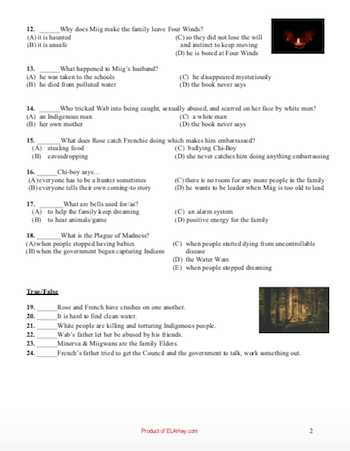
Each of their stories describes their struggles yet in unique ways, each character has hope in some form or other by the end. My favourite parts of this novel are the characters’ “coming-to” stories, which describe how they came to be a part of the group that is on the run. The language is poetic, and the analogies to the world we live in today are chilling. My voice shook with emotion more than once as I read and saw my own reactions reflected back to me on my students’ faces. Each time, new symbolism and imagery jumps off the page and gives me goosebumps.Īs my students tend to be reluctant readers and avoidant learners, I read the novel aloud to them to ensure their full understanding. I have read this novel three times now (once for the first time, again over the summer in preparation for teaching, and once with my class). The heroes of the novel are a group of Indigenous youth who are running from the Recruiters, living as a family and surviving in Ontario on their way to the North, where there is the rumour of remaining thriving Indigenous communities.

The key to dreaming is believed to be kept in the bone marrow of the Indigenous population, and Recruiters from the new residential schools seek to harvest it. Only Indigenous people still have the ability to dream, which has led to rampant mental health and societal dysfunction among non-Indigenous people. The world has been ravaged by climate change and war. The novel is set in a futuristic Canada where residential schools have been re-established. I knew right away it would be amazing to teach to the youth I work with.

I alternate the novels I teach from year to year to keep my teaching current, and earlier this year I was lucky enough to come across The Marrow Thieves by Cherie Dimaline.

That sounds bleak, and truly it sometimes feels that way, which is why I plan my most energizing unit (for me and the students) at this time of year: I tie in the class novel study with personal essay/autobiographical nonfiction writing. Daylight savings and that elusive hour of extra sleep that we are promised that one time have also long faded into the distance, and I am left with darkness as I drive to work, and darkness as I drive home. The “honeymoon phase” with new my new class ended with the month of September difficult behaviours, attendance concerns and schoolwork avoidance start to come out in full force in the alternate program where I teach. November is the hardest time of year for me as a teacher. “…I understood that as long as there were dreamers left, there will never be want for a dream”


 0 kommentar(er)
0 kommentar(er)
